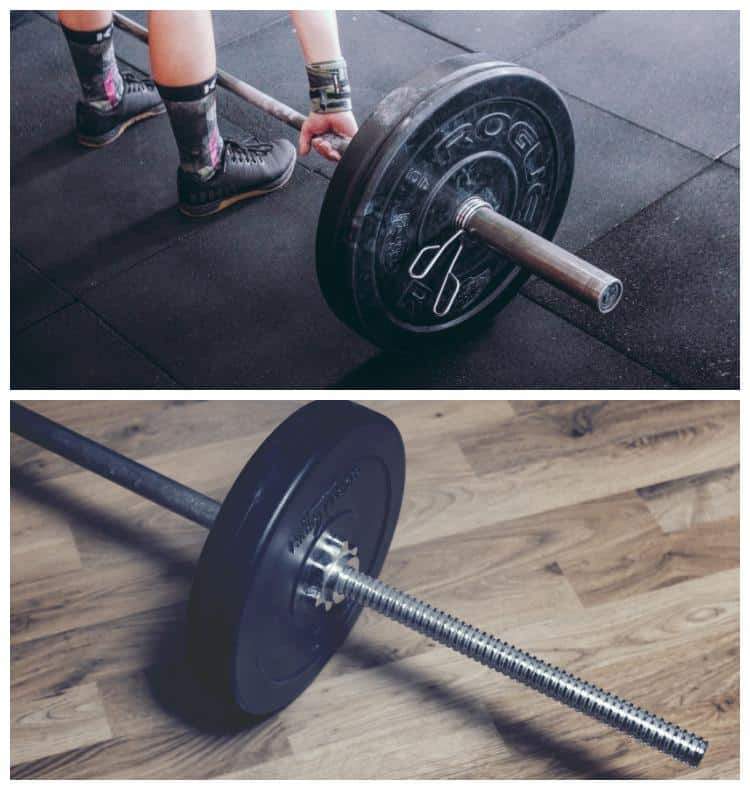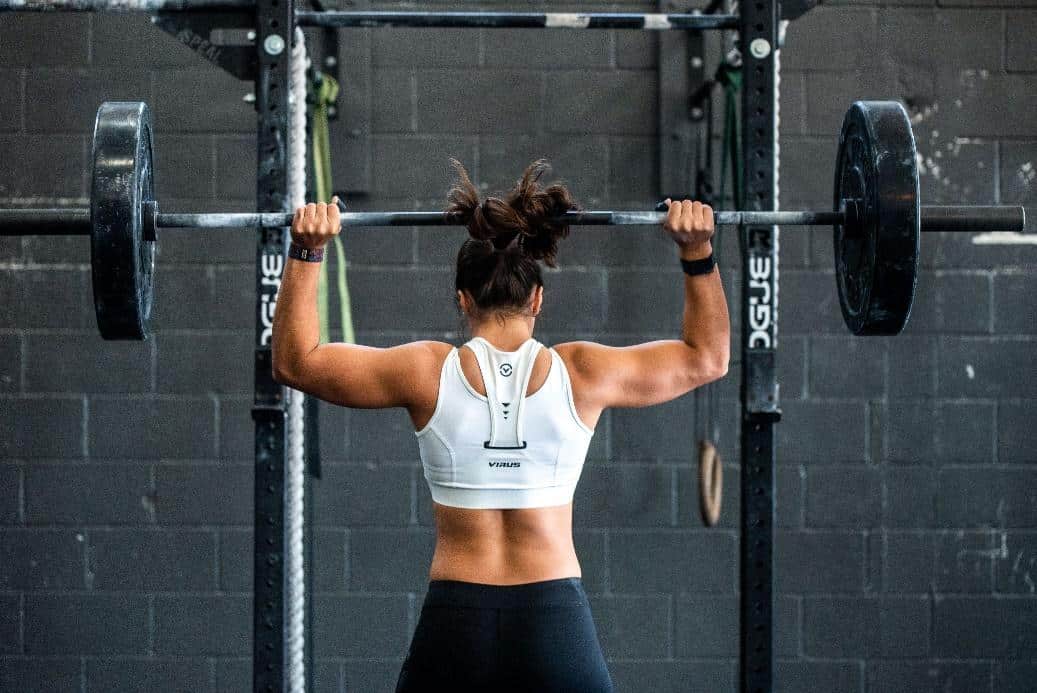27 de June de 2023
Olympic Barbell vs Standard Barbell
Brief Description of Both Olympic & Standard Barbells
Olympic Bars have surpassed standard bars that were commonly used in most weightlifting facilities. While Olympic bars got their name from being primarily used for Olympic weightlifting, they are now increasingly seen in sports centers, whether commercial gyms or high-performance facilities. Due to their competitive use, these bars have the same length and weight in their male and female versions. The “men’s bars” are slightly longer and heavier, able to handle more weight than the “women’s bars”. The terms “male” and “female” refer to the bars used in competition based on the athlete’s gender.
Standard bars, on the other hand, refer to all non-Olympic bars. They can be easily distinguished by their size and shape, as a standard bar usually has the same diameter throughout the grip area and the ends where the weight plates are loaded. In Olympic bars, however, there is a significant difference between the middle grip area and the ends where the weight plates are added.

When comparing Olympic bars vs. standard bars, there are several characteristics to consider, which determine their price and utility. The main differences between them are their dimensions and weight, the material they are made of, their price, and the significant difference between one bar and the other: the rotating capacity at the ends. Throughout the article, we discuss each of these differences, highlighting the advantages and disadvantages of each type.
Weight & Dimensions

Olympic bars have standardized dimensions, while the measurements of standard bars can vary widely. Men’s Olympic bars are 220 cm long and weigh 20 kilograms. They have a diameter of 50 mm at the ends and a grip diameter of 28 mm. Women’s Olympic bars, on the other hand, measure 201 cm in length and have a thinner grip with a diameter of 25 mm, which makes them weigh 15 kg instead of 20 kg. The diameter at the ends is the same: 50 mm, ensuring that the weight plates and other accessories fit perfectly on either type of bar.
Standard bars do not have standardized dimensions. Their diameter is usually one inch, which is approximately 25 mm, which is why they may be referred to as “one-inch bars”. The ends where the weight plates are inserted typically have a diameter of about 28 or 30 cm. However, the diameter, as well as the length and weight, can vary significantly among manufacturers.
Comparison between Olympic and Standard Barbells
The advantage of the Olympic bar is that we don’t have to measure or weigh it. We know that all Olympic bars will have those standard dimensions, diameter, and weight. On the other hand, standard bars can vary in length, weight, and diameter, typically 28 mm or 30 mm (the most common), or even other sizes. This can lead to compatibility issues when fitting weight plates, safety collars, and other equipment like storage racks.
Another advantage of the Olympic bar vs. the standard bar is that we always know its exact weight, allowing us to accurately determine the total weight we are lifting. With a standard bar, we may not know the bar’s weight unless we weigh it separately or use the same bar with a known weight. The men’s Olympic bar adds 20 kg to the exercise, while the women’s bar adds 15 kg to the weight of the plates.
The advantage of the standard bar is that we can find a bar that fits our space if we are setting up a home gym. When purchasing a bar for home training with limited space, there are shorter options available, and some may even be collapsible for use in the living room. The lower weight of a standard bar allows beginners to perform exercises that they may not be able to do with the 15 or 20 kg Olympic bars, which is also an advantage of the standard bar for this population.
Price & Materials of Olympic and Standard Barbells
Olympic bars are typically made of higher-quality materials, often steel. This results in greater durability and functionality compared to standard bars, but it also means that Olympic bars come with a higher price tag. The difference in materials allows an Olympic bar to handle much heavier weight loads than a standard bar. The extent of this difference will depend on the manufacturer, and it is usually indicated in the product description.
Comparison
The advantage of the Olympic barbell is that its materials are of higher quality to meet the mandatory Olympic requirements. This feature allows for much greater weight capacity compared to a standard barbell, which can easily bend if exceeded. When purchasing an Olympic barbell, one of the factors that determines its price is the maximum weight we can lift with it: the higher the weight capacity, the higher the price.
The advantage of the standard barbell is that it is much cheaper than Olympic barbells, especially when considering mid-range and high-end options. Although the price difference is explained by the quality of materials, durability, and functionality, a standard barbell is more than sufficient if we are beginners in strength training and simply want to lift some weight in the gym. If you are lifting heavy weights and want to carefully control the progression of your load, an Olympic barbell would be a better choice.
Most Important Differences between Olympic and Standard Barbells

When comparing the Olympic barbell vs the standard barbell, there is one main difference: the rotation of the ends. The standard barbell is rigid throughout its entire length, which means that any rotational movement caused by the inertia of the exercise is transferred to the hands. In typical gym exercises like bicep curls or rows, this may be negligible. However, when performing exercises like squats, deadlifts, or bench presses with heavy weight on the bar, that vibration in the wrists, elbows, and shoulders becomes significant.
The Olympic barbell has rotating ends, allowing them to spin while the central grip portion remains stationary. This feature is crucial in Olympic weightlifting, as the kinetic energy of the barbell continues even after the barbell stops, and this energy is absorbed by the rotating ends. This means that our hands, elbows, and shoulders don’t have to resist that rotational energy, unlike with standard or traditional barbells. This factor significantly affects athletic performance and injury prevention, making it essential to consider when choosing a barbell.
Comparison
In CrossFit gyms and any sports facility where Olympic weightlifting is performed, the use of Olympic barbells is virtually mandatory. The same applies to powerlifting competitions, where the goal is to lift the maximum weight for a single repetition in squat, bench press, and deadlift. In these disciplines, every detail is taken into account, and the fact that an Olympic barbell allows rotation at the ends while a standard barbell does not is the main difference that leads to choosing the Olympic barbell.
Individuals who train for strength with the goal of getting fit and building muscle mass may not necessarily need the best barbell or even an Olympic barbell, although, in general terms, it will always be the better option. These recreational strength training enthusiasts may not notice whether the ends rotate or not because their movements do not generate as much kinetic energy to test it. In these cases, the choice between using an Olympic barbell or a standard barbell in their training sessions is a personal preference. However, for more advanced individuals in strength training and certainly for athletes who perform Olympic weightlifting, the balance should always tilt towards the Olympic barbell.
Joaquín Vico Plaza
References
Everything You Need to Know About Olympic Barbells. (2023, 31 marzo). Lifespan Fitness. https://www.lifespanfitness.com.au/blogs/fitness-blogs/about-olympic-barbells
Hoyles, S. (2023, 8 junio). Olympic Barbell Vs Standard Barbell: The Ultimate Guide. Strong Home Gym. https://stronghomegym.com/olympic-barbell-vs-standard-barbell/
Weightlifting, T. (2023). Olympic vs Standard Barbell: Difference Explained. Torokhtiy Weightlifting. https://torokhtiy.com/blogs/guides/olympic-vs-standard-barbell

